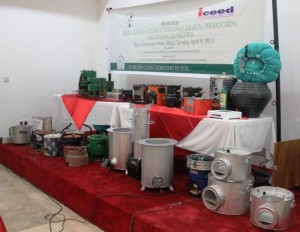The Intergovernmental Panel on Climate Change (IPCC) has produced what appears to be the most comprehensive assessment of climate change ever. The Fifth Assessment Report (AR5), is the work of 830 expert authors from 85 countries and its first three volumes already stretch to 5,000+ pages. The Climate and Development Knowledge Network (CDKN) and the Overseas Development Institute (ODI) have created a guide to the assessment for decision-makers in Africa tagged “What’s in it for Africa”, which is intended to encourage understanding and discussion of the report worldwide.

According to the document, the IPCC recognises that Africa has low levels of emissions and that over time these emissions will increase moderately and to meet pressing development needs. In expanding economically and meeting their development needs, African countries have abundant opportunities to adopt clean, efficient low-carbon technologies and practices. They can side step the inefficient, fossil fuel-dependent infrastructure that more developed countries are ‘locked into’.
The report identifies many low-carbon opportunities and co-benefits; the measures to avoid greenhouse gas emissions provide generous gains in economic productivity, human development and quality of life.
Improvements in the performance and cost of renewable energy technologies are significant for Africa, given the huge renewable energy resource endowment across the region and the need to scale up energy services to meet demand. Encouraged by developments, many countries across Africa are investing heavily in new energy infrastructure as well as putting in place regulatory and policy measures to persuade the private sector to invest in energy.
In addition, decentralised, renewable energy technologies, such as improved cookstoves, can markedly alleviate the workload and enhance the personal security of women and girls. The cookstoves, while reducing greenhouse gas emissions, lessen the need for women and girls to walk long distances to collect firewood, and vastly reduce illness and death from indoor air pollution.
According to What’s in it for Africa, much of the urban space in Africa is yet to be developed, so urban adaptation provides opportunities for incremental and transformational adjustments towards resilient and sustainable systems. Reducing energy and water consumption through greening cities and recycling water, and developing resilient infrastructure systems can reduce the vulnerability of urban settlements in many parts of Africa.
At present, six of the 10 fastest growing economies in the world are in Africa. Projections indicate that the region’s urban population will double to 760 million by 2030. Many city planners advocate for more compact city structures that would accommodate Africa’s growing urban population while curbing greenhouse gas emissions by reducing the need for transport. However, compact urban development may conflict with adaptation strategies, such as providing urban green spaces to counter urban heat island effects and moderate storm water run-off by increasing water filtration into the soil.
The cities and towns of Africa are very vulnerable to climatic changes and climate variability. Rapid urbanisation calls for significant investment to create jobs, and provide infrastructure and services but basic infrastructure services lag behind urban growth. What’s in it for Africa emphasises the major opportunity faced by Africa through the development of low-carbon mass transit systems which can boost economic productivity by reducing traffic congestion and can improve air quality, thus benefiting public health.
Energy use in the transport sector is growing rapidly in Africa. Social expectations will need to change quickly if the region is to follow a low- carbon pathway. Rising incomes as a result of development have, in the past, increased the consumption of energy in the transport sector and allowed more people to own cars. Rising energy consumption in the transport sector and car ownership lead to an increase in greenhouse gas emissions and high levels of air pollution.
According to What’s in it for Africa and the IPCC’s Fifth Assessment Report, part of Africa’s vulnerability lies in the fact that recent development gains have been in climate-sensitive sectors. Economically, many Africans depend for food, fibre and income on primary sectors such as agriculture and fisheries, sectors which are affected by rising temperatures, rising sea levels and erratic rainfall. Reduced crop productivity is associated with heat and drought stress and will have strong adverse effects on regional, national and household livelihood and food security. Solutions put forward by the report include technological adaptation responses, enhancing smallholder access to credit and other critical production resources, diversifying livelihoods, strengthening institutions at local, national and regional levels to support agriculture, gender-orientated policy and agronomic adaptation responses.
